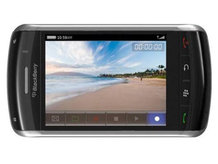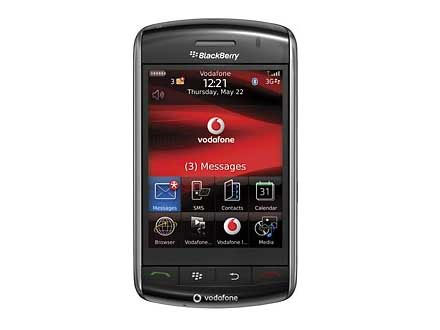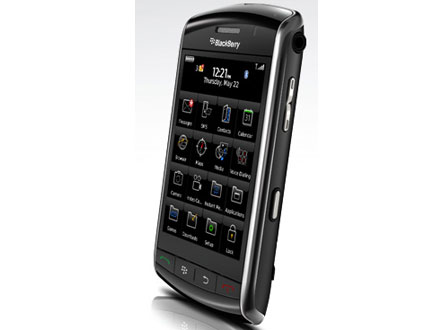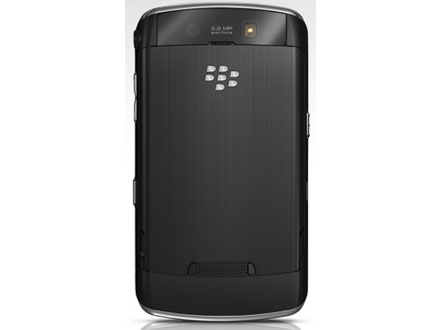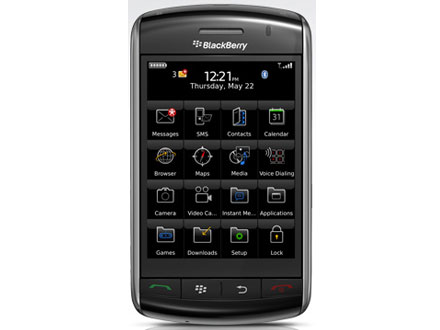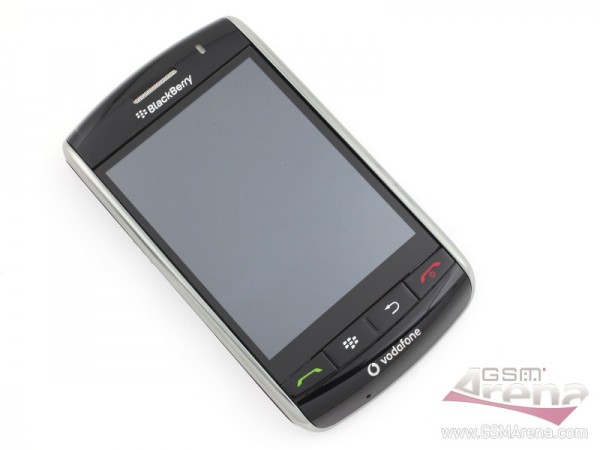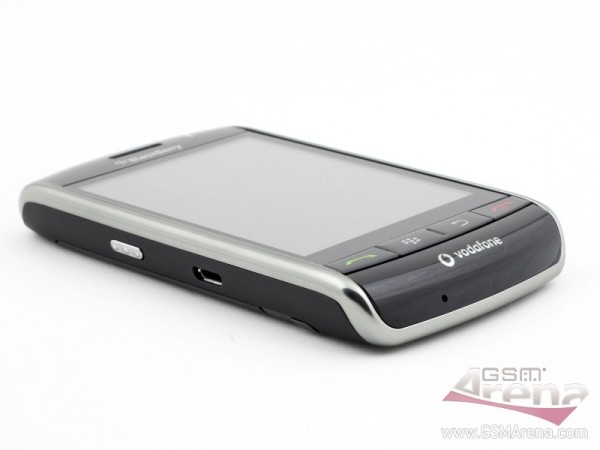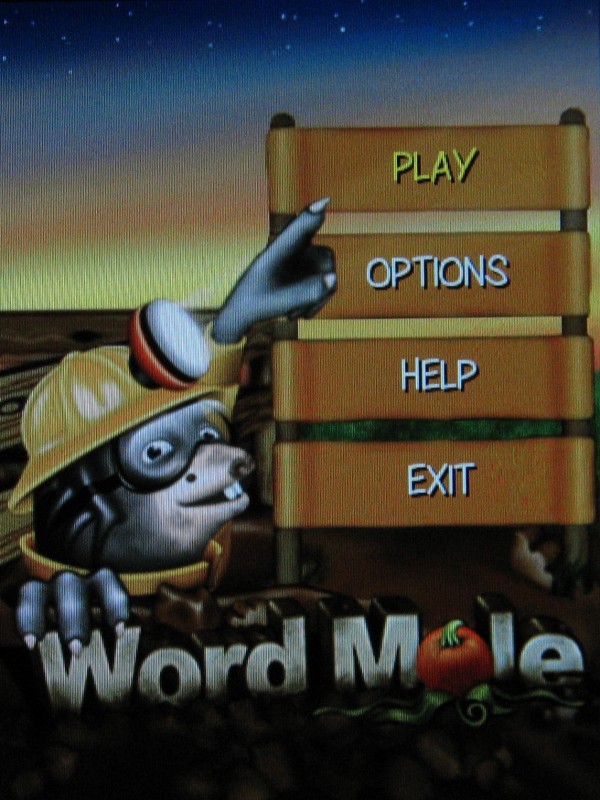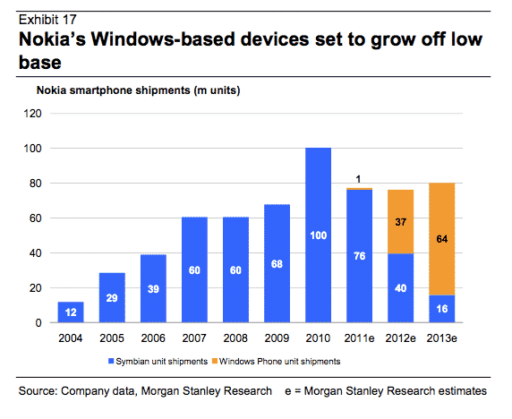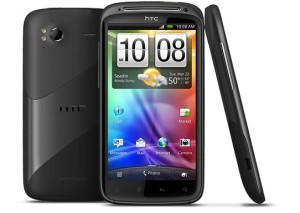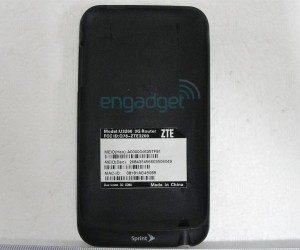The Storm is a successful experiment and a decent smartphone. Those who take to the clickable touchscreen will love its ease of use and the excellent range of productivity tools on-board.
Click On Add to Buy BlackBerry Storm 9500
The Canadian manufacturer RIM is walking an unbeaten path by adding unique clickability to the fluid precision of the capacitive touchscreen technology.
Design
Somewhere between the aesthetics of the BlackBerry Bold and the iPhone 3G you’ll find the chic BlackBerry Storm. The large, colourful screen lends itself to comparison with Apple’s wunderkind, but the details of the design are undeniably BlackBerry.
The Storm is sexy: a combination of glossy piano-black and stainless steel line the display, with a faux brushed metal matte-black plastic battery cover. External keys on the edges are also in steel and include a volume rocker and a dedicated camera shutter button. The Storm features a 3.5mm headphone jack on the top-right side of the phone, as all self-respecting multimedia mobiles should.
To complement the touchscreen input, the Storm also sports a familiar quartet of mechanical keys below the screen, the same calling keys and BlackBerry context-sensitive menu button we’ve seen on all recent release BlackBerry handsets.
Features
On paper the Storm is a classic BlackBerry. It puts in something new, the touchscreen, but takes something away: in this case that’s Wi-Fi. When you consider that the Storm was developed in partnership with phone carriers Vodafone and Verizon in the US, it makes sense that the Storm wouldn’t feature hardware capable of circumventing the carriers ability to make money off data services. Still, for consumers this is a bit of a blow.
For chewing through said data, the Storm features HSDPA network support and browses the web through the same BlackBerry browser we find in the Bold, optimised for touchscreen input, of course. The Storm also includes Bluetooth for pairing to hands-free headsets.
In regards to pre-installed software, BlackBerry aficionados won’t be missing any standard inclusions like the excellent messaging client, document readers, a variety of instant messaging apps and the browser. As an exclusive to Vodafone, our review unit also included links to download Vodafone service apps like MusicStation and the always improving Vodafone Compass navigation software.
Prior to the launch of the Storm RIM began spruiking the BlackBerry Application Centre, a centralised web space to download a range of apps and tools for newer BlackBerrys. Our review unit features the shortcut, though the App Centre is only populated with about a dozen apps at this time — hardly the 10,000 reportedly available on the Apple App Store.
Touchscreen
A BlackBerry with a touchscreen may seem like a Porsche with wings — as though the two don’t quite go together — but trust us; this is a cool step forward for the BlackBerry family. It seems that BlackBerry manufacturer Research in Motion (RIM) anticipated a reticence to touchscreens from its loyal fans so it developed a depress-able screen and software it calls SurePress.
The touchscreen uses the same capacitive touchscreen technology as the iPhone and it registers contact with the surface as accurately. Unlike the iPhone, contact with the screen will only highlight a selection, not execute one. Opening a program requires you to touch the screen then press gently — this is SurePress in action. While this may seem like extra effort, it actually acts as a second chance. Rather than regularly opening and closing programs by mistake, or mistyping letters in an email, you have that split second to realise you’ve hit the wrong key before pressing on the screen.
Communication king
RIM may have given the Storm an alluring facelift, but communication is still at its core. Email is – as you would expect – dealt with adeptly. In addition to the usual outstanding Enterprise functionality it’s now even easier for the less business-inclined to set up personal accounts simply by entering a username and password. Inboxes can be kept separate, with push email instantly alerting you to new messages in each account.
Document viewing and editing is seamless using DataViz’s Documents To Go, so email attachments can be dealt with fluidly. There’s also RIM’s usual set of calendar and address book functions, which can be synced to your PC using the accompanying BlackBerry Desktop Software.
BlackBerry Application Centre
But RIM is determined to prove the Storm isn’t just for suits, and the inclusion of a raft of Instant Messaging apps for download as well as a Facebook and Flickr apps will add to its zeitgeist appeal. All of these are available to download free from the Vodafone-hosted Application Centre, which also offers apps like YouTube and Google Maps. These will be joined by many more next year when RIM launches its own Application Storefront in March.
Multimedia features
The Storm’s social networking apps are well integrated into the furniture of the handset. Once downloaded, you can upload your photos to Flickr or videos to YouTube at the click of a button. Geo-tagging is a notable absentee, despite the inclusion of GPS. As a nod to its business roots, companies will still have the ability to control what apps its employees download.
The camera itself is a capable 3.2-megapixel number offering auto focus, zoom and auto flash (well, LED light). There’s a small lag between focus and taking a picture, but images are still reasonably crisp – not quite up to Sony Ericsson’s Cyber-shot or Carl Zeiss imbued Nokias, but more than acceptable for the likes of Flickr and co.
The music player keeps things clean and functional but still supports cover art and the ability to create playlists on the device itself. The built-in speaker is surprisingly rich, and audio quality in general is above par. A 3.5mm jack is provided to connect your own headphones, and side buttons (real ones) act as volume controls.
Supported formats are extensive and include MP3, AAC and WMA. There’s also iTunes ‘syncing’ with your PC, although not quite in the way your iPod does it. Essentially the BlackBerry Media Sync software allows you to see and import your iTunes library – but will not copy over any tracks downloaded from the iTunes Store due to that harbinger of doom, DRM.
Watching movies on the vivid 3.25in screen is also enjoyable. Fortunately storage isn’t an issue either, with 1GB of onboard memory supplemented by an expansion slot supporting microSD/SDHC cards up to 16GB.
Wi-Fi missing from the party
When it comes to connectivity, there’s good news and bad news. The good news first: HSDPA is included for faster mobile browsing, while USB and stereo Bluetooth are both present and correct. You can even use the handset as a tethered modem. The bad news is there’s no Wi-Fi.
It’s debatable as to how big a deal this is – for many though it could be a deal breaker. In reality, Vodafone has implemented a variety of ‘all-you-can-eat’ style internet and email tariffs, removing the worry of humungous mobile bills at the end of the month. Which just leaves the issue of speed. With no Wi-Fi you’re at the mercy of Vodafone’s 3G and HSDPA coverage, and while one of the best around in this respect, nobody’s perfect.
Web browser is quite nice
The web browser of BlackBerry Storm is a whole lot better than its connectivity set. Nicely touch-optimized, it takes the otherwise good BlackBerry application to a whole new level. The extraordinary touchscreen really makes a difference here, making sure you will never again hit a link by mistake. Now, if only they’d added Flash support all would’ve been just fine.
Panning is the done by sweep gestures, and zoom is controlled by tapping on the screen. You can also zoom using the shortcut keys appearing on the screen in non-fullscreen mode or via the relevant menu. However that last option is hardly comfortable so we doubt anyone will use it too often. When you zoom in by tapping on a desired column the text does automatically center onscreen.
Page rendering is quite good, making all the pages look as if browsed on a desktop PC. The high resolution is also a welcome bonus here, as it allows more content to fit on the screen. In all fairness, we did have a few instances of web pages not getting properly rendered but those were too rare to be an issue.
Unfortunately, the web browser has no Flash support, meaning flash video websites like YouTube are a no-go for the Storm owners.
So, generally speaking, the Storm web browser is quite comfortable to work with, even though a few more gestures implemented might have improved it even more. The lack of Flash is the big problem with it but the general experience still deserves a very positive mark.
Organizer is just great
The organizer is one of the best parts of the Storm. It has a good set of applications and although some of them are not quite some lookers, their usability is on a very decent level.
The calendar has monthly, weekly and daily view modes and allows easily customized events to be set up. We have to admit that some event presets would have been useful but unluckily the device fails to provide them.
Mobile office is also very well geared, with preinstalled applications able to open and edit Word, Excel and PowerPoint files. Furthermore, document editing is also supported unlike most competing phones. Unfortunately, there is no PDF viewer preinstalled so potential users will have to get one themselves.
The organizer package also includes a calculator with a built-in unit-converter as well as voice recorder and a Notes application. A handy To-do manager allows you to set-up and organize your upcoming tasks.
The alarm application allows you to set only one alarm which doesn’t get standing ovation. It’s quick to turn on but most of its settings can only be adjusted from the settings menu. There you can change the tone, snooze interval and the volume as well as the vibration intensity.
The clock also offers a bedside mode that turns off the status LED (unless you set it otherwise) and displays a large clock on the screen. The display then automatically lights up when you lift the phone thanks to the built-in accelerometer.
Gaming: not the Storm element
Frankly we didn’t expect to see much gaming spirit in the BlackBerry Storm 9500 and as it turned out we were right. Our unit only came with two preinstalled games.
The first was a version of the all too popular Bricks game, adapted for touch control. While you might need some time getting used to operating your pad this way, once you do so it is hardly too different from the other similar titles we have tried.
The other game is the Word Mole, where you have to compose words with the letters given on the board. Various bonuses and bonus levels are also at hand.
GPS navigation
BlackBerry Storm 9500 is equipped with a built-in GPS receiver with A-GPS support. For navigation you get BlackBerry Maps, which supposedly come preinstalled (not on our unit though). Our American friends can also enjoy the Verizon Navigator, which is quite more functional and you can also get the free Google Maps if data traffic doesn’t bother you.
BlackBerry Maps provides basic map functionality plus voice-guided navigation. You can enter addresses straight from your phonebook and you can also save your favorite spots so you don’t have to type them every time.
The BlackBerry Maps also allow you to send your location to anyone via email or SMS.
Performance
Despite some minor lagging we’ve found the Storm to be quite powerful and sufficiently responsive. Some tasks, like opening large video files, can take a moment or more to process, but basic menu navigation and the all-important messaging app run pretty smoothly.
If you can put up with the short pause as the video loads then watching video on the Storm is great. Unlike the iPhone, the Storm has excellent video codec recognition, supporting MPEG4, H.264, WMV and the obligatory 3GP mobile phone video format. Formats the phone doesn’t recognise are converted during transfer via the BlackBerry Desktop Manager. The 3.25-inch touchscreen is sharp and colourful and the audio is decent. The same, of course, can be said for music playback, though we do recommend forking out for an upgrade to the headphones that come bundled with the phone.
Battery life is a major concern for smartphones with large, high res displays and a range of connectivity options. The Storm is not immune from sucking through the juice and we found it was possible to run the battery down after about 10 hours of heavy use, however, it manages standby battery life much better than most. With casual use we saw battery cycles of several days, even with push email active. If you make frequent calls or would listen to hours of music a day you’ll want to keep the charging pack with you.
Overall
As a dalliance into virgin territory for the BlackBerry family, the Storm is a success. As a smartphone, the Storm will suit the needs of many looking for a solid business tool with high quality media functionality. The touchscreen and RIM’s SurePress tech won’t be for everyone, and we’d be surprised if owners of the BlackBerry Bold even bat an eyelid at this release, but we love it. We’ve never been as confident smearing fingerprints over a touchscreen with our chubby, clumsy digits.
The BlackBerry Storm is exclusive to Vodafone and will be available on a BlackBerry service contract for AU$69 per month and includes unlimited data and an 8GB microSD card.

